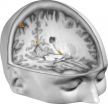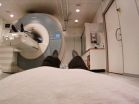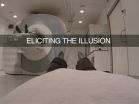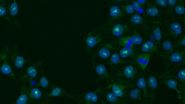Brain scan reveals out-of-body illusion
2015-04-30
(Press-News.org) The feeling of being inside one's own body is not as self-evident as one might think. In a new study from Sweden's Karolinska Institutet, neuroscientists created an out-of-body illusion in participants placed inside a brain scanner. They then used the illusion to perceptually 'teleport' the participants to different locations in a room and show that the perceived location of the bodily self can be decoded from activity patterns in specific brain regions.
The sense of owning one's body and being located somewhere in space is so fundamental that we usually take it for granted. To the brain, however, this is an enormously complex task that requires continuous integration of information from our different senses in order to maintain an accurate sense of where the body is located with respect to the external world. Studies in rats have shown that specific regions of the brain contain GPS-like 'place cells' that signal the rat's position in the room - a discovery that was awarded the 2014 Nobel Prize in Physiology or Medicine. To date, however, it remains unknown how the human brain shapes our perceptual experience of being a body somewhere in space, and whether the regions that have been identified in rats are involved in this process.
In a new study, published in the scientific journal Current Biology, the scientists created an out-of-body illusion in fifteen healthy participants placed inside a brain scanner. In the experiment, the participants wore head-mounted displays and viewed themselves and the brain scanner from another part of the room. From the new visual perspective, the participant observes the body of a stranger in the foreground while their physical body is visible in the background, protruding from the bore of the brain scanner. To elicit the illusion, the scientist touches the participant's body with an object in synchrony with identical touches being delivered to the stranger's body, in full view of the participant.
"In a matter of seconds, the brain merges the sensation of touch and visual input from the new perspective, resulting in the illusion of owning the stranger's body and being located in that body's position in the room, outside the participant's physical body," says Arvid Guterstam, lead author of the present study.
In the most important part of the study, the scientists used the out-of-body illusion to perceptually 'teleport' the participants between different places in the scanner room. They then employed pattern recognition techniques to analyze the brain activity and show that the perceived self-location can be decoded from activity patterns in specific areas in the temporal and parietal lobes. Furthermore, the scientists could demonstrate a systematic relationship between the information content in these patterns and the participants' perceived vividness of the illusion of being located in a specific out-of-body position.
"The sense of being a body located somewhere in space is essential for our interactions with the outside world and constitutes a fundamental aspect of human self-consciousness," says Arvid Guterstam. "Our results are important because they represent the first characterization of the brain areas that are involved in shaping the perceptual experience of the bodily self in space."
One of the brain regions from which the participants' perceived self-location could be decoded was the hippocampus - the structure in which the Nobel Prize awarded 'place cells' have been identified.
"This finding is particularly interesting because it indicates that place cells are not only involved in navigation and memory encoding, but are also important for generating the conscious experience of one's body in space," says principal investigator Henrik Ehrsson, professor at the Department of Neuroscience.
INFORMATION:
Publication: 'Posterior Cingulate Cortex Integrates the Senses of Self-location and Body Ownership', Arvid Guterstam, Malin Björnsdotter, Giovanni Gentile & Henrik Ehrsson, Current Biology, online 30 April 2015.
Journal website: http://www.cell.com/current-biology
More about the Ehrsson lab at Karolinska Institutet: http://www.ehrssonlab.se
Karolinska Institutet - a medical university: ki.se/english
ELSE PRESS RELEASES FROM THIS DATE:
2015-04-30
First study to show pattern of telomere changes at multiple time points as cancer develops
Telomeres can look 15 years older in people developing cancer
Pattern suggests when cancer hijacks the cell's aging process
CHICAGO -- A distinct pattern in the changing length of blood telomeres, the protective end caps on our DNA strands, can predict cancer many years before actual diagnosis, according to a new study from Northwestern Medicine in collaboration with Harvard University.
The pattern -- a rapid shortening followed by a stabilization three or four years before ...
2015-04-30
Rochester, Minn. -- Over the last decade, numerous studies have shown that many Americans have low vitamin D levels and as a result, vitamin D supplement use has climbed in recent years. Vitamin D has been shown to boost bone health and it may play a role in preventing diabetes, cancer, cardiovascular disease and other illnesses. In light of the increased use of vitamin D supplements, Mayo Clinic researchers set out to learn more about the health of those with high vitamin D levels. They found that toxic levels are actually rare.
Their study appears in the May issue of ...
2015-04-30
LA JOLLA--Stem cells, which have the potential to turn into any kind of cell, offer the tantalizing possibility of generating new tissues for organ replacements, stroke victims and patients of many other diseases. Now, scientists at the Salk Institute have uncovered details about stem cell growth that could help improve regenerative therapies.
While it was known that two key cellular processes--called Wnt and Activin--were needed for stem cells to grow into specific mature cells, no one knew exactly how these pathways worked together. The details of how Wnt and Activin ...
2015-04-30
Many human communities want answers about the current status and future of Arctic marine mammals, including scientists who dedicate their lives to study them and indigenous people whose traditional ways of subsistence are intertwined with the fate of species such as ice seals, narwhals, walruses and polar bears.
But there are many unknowns about the current status of 11 species of marine mammals who depend on Arctic sea ice to live, feed and breed, and about how their fragile habitat will evolve in a warming world.
A recently published multinational study attempted ...
2015-04-30
AUSTIN, Minn. (4/30/15) - Taking aspirin reduces a person's risk of colorectal cancer, but the molecular mechanisms involved have remained unknown until a recent discovery by The Hormel Institute, University of Minnesota.
Researchers led by The Hormel Institute's Executive Director Dr. Zigang Dong and Associate Director Dr. Ann M. Bode, who co-lead the Cellular & Molecular Biology section, discovered that aspirin might exert its chemopreventive activity against colorectal cancer, at least partially, by normalizing the expression of epidermal growth factor receptor (EGFR) ...
2015-04-30
New York, NY (April 30, 2015) - The use of integrative medicine interventions leads to significant improvements in patient activation and patient-reported outcomes in the treatment of chronic pain, depression, and stress, according to a new report released by The Bravewell Collaborative. The findings are based on data collected by the Patients Receiving Integrative Medicine Interventions Effectiveness Registry (PRIMIER), the first-ever patient registry on integrative medicine.
"We are encouraged by these early results, and we see tremendous potential for PRIMIER to provide ...
2015-04-30
Philadelphia, April 30, 2015 -- The American College of Physicians (ACP) today released clinical advice aimed at reducing overuse of cervical cancer screening in average risk women without symptoms. "Cervical Cancer Screening in Average Risk Women" is published in Annals of Internal Medicine and lists two concurring organizations: the American Congress of Obstetricians and Gynecologists and the American Society for Clinical Pathology.
"ACP's advice for cervical cancer screening is designed to maximize the benefits and minimize the harms of testing," said Dr. David Fleming, ...
2015-04-30
1. American College of Physicians releases Best Practice Advice for the proper time, test, and interval for cervical cancer screening
ACP's advice is supported by ACOG and endorsed by ASCP
New clinical advice from the American College of Physicians (ACP) aims to reduce overuse of cervical cancer screening in average risk women without symptoms. "Cervical Cancer Screening in Average Risk Women" is published in Annals of Internal Medicine and lists two concurring organizations: the American Congress of Obstetricians and Gynecologists and the American Society for Clinical ...
2015-04-30
HOUSTON - (April 30, 2015) - The percentage of Texans without health insurance dropped 31 percent since enrollment began in the Affordable Care Act's (ACA) Health Insurance Marketplace, according to a new report released today by the Episcopal Health Foundation and Rice University's Baker Institute for Public Policy.
The report found that from September 2013 to March 2015, the percentage of uninsured adult Texans ages 18-64 dropped from 25 to 17 percent.
"This is a dramatic drop that's unprecedented in Texas," said Elena Marks, president and CEO of the Episcopal Health ...
2015-04-30
Due to a lack of suitable studies, no conclusions can be drawn on the patient-relevant benefit or harm of screening for asymptomatic bacteriuria (ASB) in pregnant women. The benefit of antibiotic treatment of ASB following screening is also an open issue, as the results of the over 40-year-old studies cannot be applied to the current healthcare situation. This is the result of the final report published by the German Institute for Quality and Efficiency in Health Care (IQWiG) on 23 April 2015, which was commissioned by the Federal Joint Committee (G-BA).
Maternity guidelines ...
LAST 30 PRESS RELEASES:
[Press-News.org] Brain scan reveals out-of-body illusion




